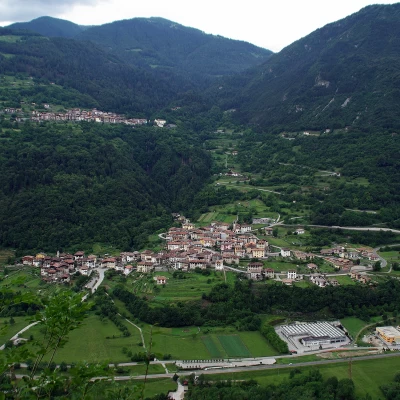Malga Caino

Introduction
Easy and interesting route through historical reminders of the First World War and ethnographic vestiges of forestry activities. Through restored buildings and reconstructions of structures related to the work of the woodcutters and charcoal burners, we walk through the wooded valley of the Rio Caino until we reach a series of discreetly preserved military structures, a backward observation point of the Adamello front. The natural environment of the Chiese River is also very well preserved.
.Description
From the car park, one immediately crosses the river on a rope bridge-passerelle; on the other bank, one begins to climb between the buildings of an old forge and in view of the structures of a mill: a single gora channel still allows the mechanisms of the two activities to be operated. We continue along a cart track in the forest, encountering in succession a number of illustrative panels, collections of woodcutters' tools and a reconstruction of a chute for logs to be directed downhill. At a widening overlooking the valley, we find a small botanical garden with a collection of poisonous medicinal plants used by a local 16th-century witch (historical documents on dedicated panel). Just beyond an aqueduct tollgate, we pass along a path and reach the section with numerous covered trenches: at present, the growth of the forest does not allow us to see the potential for observation, but a photographic board highlights the military situation at the time. Further on in the beautiful beech and fir forest, we encounter the reconstruction of a charcoal pile; now almost level, we reach the final clearing of the Malga Caino. [Nearby, a farmhouse that can be reached by another asphalted road]. For the return journey, initially follow the carriage road downhill for a few hundred metres: you will immediately come across the structure of a calchera (a kiln for firing limestone to obtain lime) and then, near a wartime remnant cannon, the construction of a bird catcher's nest. The track, detached from the road, becomes a path through the woods and gradually descends in wide bends into the beech forest: just beyond a petrifying spring (the high content of calcium salts in the water causes everything wet to be covered in a layer of limestone, like travertine), we pass a few barns and soon return to the forge building. From here, cross the bridge to the car park.
NOTE Accompanied tours are offered during tourist periods, with demonstrations of craft and woodland activities, and the opening of two small ethnographic museums.


